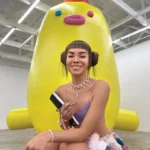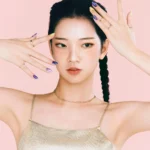Forget the airbrushed perfection of Instagram models and the sculpted physiques of fitness gurus. The influencer marketing landscape is undergoing a metamorphosis, and the future leans towards the digital. Enter the realm of virtual influencers, AI-powered entities captivating hearts (and brand deals) across the internet.
Imagine a world where your influencer seamlessly transitions from a bustling Tokyo fashion launch to a live cooking demo on Mars, all before squeezing in a late-night Twitch chat with fans. No jet lag, no travel budget, and certainly no need for sleep – these digital stars transcend the limitations of the physical world. But their allure extends beyond superhuman schedules.
These AI-driven personalities have broken into the growing $21 billion content creator economy. Gone are the days of hefty endorsement fees and unpredictable collaboration with human influencers – brands are finding unprecedented success with these hyper-realistic digital personas. Let’s explore the rise of virtual influencers and how they’re rewriting the rulebook on brand engagement and audience reach.
Lil Miquela – The Trendsetter

Lil Miquela, also known as Miquela Sousa, is a virtual character with over 3 million followers on Instagram and 1.5 million on YouTube. Her strikingly realistic appearance and engaging personality have made her one of the most influential virtual figures. She collaborated with Prada in 2018, generated wide media coverage and significant social media buzz. The campaign successfully showcased Prada’s products to a younger and tech-savvy audience, increasing brand visibility and potentially leading to increased sales.
Aitana Lopez – The Beauty Enthusiast

Aitana Lopez is a young virtual influencer recognized for her vibrant and youthful content. She has a significant following across multiple platforms, and her posts often revolve around beauty, fashion, and lifestyle. Thanks to Aitana’s online fans, the designer, Rubén Cruz, is now making a fortune, netting up to $US10,900 ($16,500) per month. “We did it so that we could make a better living and not be dependent on other people who have egos, who have manias, or who just want to make a lot of money by posing,” said Rubén Cruz in an interview with EuroNews.
Oh Rozy – The Expression Expert

Oh Rozy is the first hyperrealistic virtual social media influencer from South Korea created by Sidus Studio X. She is branded as a romantic companion that can “cure loneliness” and offer life advice. She has been featured in Vogue Korea and has more than 160K followers on Instagram. According to Kim Jin-soo, director of Sidus Studio X, Oh Rozy has received more than 100 advertisement offers so far, in which one of them is a big major brand namely Chevrolet. The challenges and opportunities for creative industries will only grow as AI becomes more advanced and widespread.
The Marketing and Sales Impact
Increased Reach and Engagement
Virtual influencers offer brands an opportunity to reach a broader and more diverse audience. With their online presence, they can engage with followers beyond limitations like physical location or language barriers. Using highly visual and relatable content, virtual influencers like Lil Miquela, Aitana Lopez, and Oh Rozy can easily grab the attention of their followers and generate higher engagement rates. Brands partnering with virtual influencers often experience increased reach and visibility among their target audience, leading to improved brand recognition and recall.
Authenticity and Storytelling
Virtual influencers are meticulously crafted to represent specific personas, allowing brands to create compelling narratives. By aligning the brand’s story with the influencers’ character traits and values, marketers can deliver a more authentic and relatable message. Followers often connect emotionally with virtual influencers, perceiving their opinions and recommendations as more genuine, which can positively impact brand perception and ultimately drive sales.
Niche Targeting and Personalization
Virtual influencers can excel at targeting niche markets due to their precise identities and characteristics. By collaborating with relevant brands, they can personalize the advertising experience for their followers, ensuring that the promoted products and services align with their interests. For example, Atiana’s dedication to beauty and wellness attracts brands within that industry, enabling them to connect with their specific target audience effectively.
Data-Driven Insights
Working with virtual influencers provides brands with valuable data-driven insights. With access to analytics and metrics, marketers can analyze the impact of their virtual influencer campaigns in real-time. The ability to track engagement rates, click-through rates, and conversions helps brands measure their return on investment (ROI) and make data-backed decisions for future campaigns.
The Future of Marketing
Virtual influencers have already proven to be significant players in the marketing landscape. As technology advances, we can expect to see more advanced and realistic virtual characters emerging, blurring the lines between virtual and reality.
Brands should consider the opportunities that virtual influencers present, collaborating with characters like Lil Miquela, Aitana Lopez, and Oh Rozy to leverage their impact on marketing and sales. With their ability to reach a wider audience, deliver authentic brand storytelling, and personalize the advertising experience, virtual influencers are poised to shape the future of brand promotions.
You are also invited to step into the future of marketing with Virtual Influencer or Digital Persona solutions from Avatara Labs. Contact us to schedule a consultation.